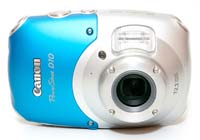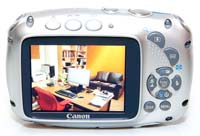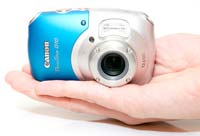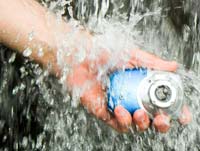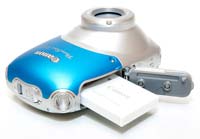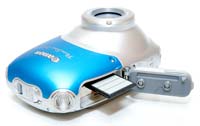
The new 370Z. It’s here, it’s as good as the hype suggests, it’s a blast at the wheel, and you can buy one now. And because I’m a lucky dog, I’ve driven it.
Lighter, shorter, lower and more powerful, the new Zed is a quantum advance over the out-going model. It is also blisteringly fast and superbly balanced. Almost everywhere you look at the new car, the shortcomings in the old have been addressed and improved.
On our first test drive through and beyond the Adelaide hills, we put it through its paces. Among the cold black hearts of the motoring press Nissan had assembled to pass judgment, the verdict was all-but unanimous - the new 370Z is a superb new contender in the sports coupe segment.
If you liked the old Zed, you will love the new one. And if your first experience of Zed-motoring is at the wheel of the 370, you’ll be asking yourself “how long has this been going on?”
So, where is it better (besides everywhere), and why will you like it?
More than just styling changes

First off, it looks better. There is a slightly ‘hawkish’ line to the long bonnet and the kicked-up hip-line over the raised haunches - a nod to the styling of the original 240Z - adds athleticism to the lines at the rear.
So too the swooping line of the roof, which now has its highest point at the top of the windscreen. Up front, the ‘arrow-head’ lights (which I’d had reservations about when I first set eyes on net images) and the gaping fanged maw, give it real presence on the road.

It would be hard to say it’s beautiful; it looks what it is - a well-crafted hammer.
Visibly smaller and ‘lighter’ on its wheels than the 350Z, the new car looks more the athletic road warrior than the highway tourer. And it turns heads everywhere. Heading back to Adelaide, the striking new colours of a wolf-pack of Zeds slinking along in file had the kids pouring out of school in the mid-afternoon absolutely gaping.
But there is more to the exterior than just styling changes. The bonnet, doors and tailgate are aluminium: alone giving a weight-saving of 32kg. Similarly, lighter materials have been used throughout the body structure and suspension underpinnings to save around 100kg overall. (That’s like having one less chunky passenger in the car, every time you drive.)

In keeping with the old, and evident in the images, the engine is mounted far back in the chassis, giving a 53 to 47 percent front-to-rear weight distribution.
But the new 370Z sits on a shorter wheelbase (now 2550mm) than the outgoing 350Z - 100mm, or 10 centimetres, have been taken from behind the hip-point of the driver and the rear axle - and it has a wider front track (15mm) and wider rear (50mm). It has also had 8mm shaved off the height and the seats are 10mm closer to the ground.
the new car looks more the athletic road warrior than the highway tourer.
Under the whip, the shorter wider wheelbase and lower centre of gravity translates into noticeably superior handling.
The work bench
The interior was perhaps the Achilles heel of the 350Z, particularly of the first models to arrive. It certainly attracted the severest criticism. In the new 370Z, there are no such worries - things inside have been vastly improved.
Gone are the tacky plastics and strange little cubby-holes. In their place now a nicely-designed centre console (with sat nav as standard fitting) and a quality soft-feel dash. There are soft suede trims on the doors, heated seats, well laid-out controls and brushed metal trims and highlights.

The three-cell instrument panel has larger, more easily read guages, and there is a cohesiveness to the way the interior elements work.
The flattened ‘kidney-shaped’ wheel feels just right: soft to the feel, neither too fat nor too thin. And the electric seats - leaning to soft but infinitely variable and nicely shaped for my frame - are trimmed in a non-slip leather for when things are getting (ahem) ‘exciting’ on a mountain road.
The 370Z also comes loaded: there are illuminated audio and telephone remote controls - and cruise control - on the steering wheel; Bluetooth phone connectivity is standard; there is also a Bose six-CD with radio (natch) and MP3 capability. And, to get things really hopping when you cruise through the ‘hood, there are speakers everywhere and two 115mm woofers in a 7.7 litre ported enclosure.

Aside from the big step-up in quality, the second-most noticable change inside is that the 350Z’s slightly daft (from a usability point of view) strut brace that prevented you from carrying anything but a tooth brush, your pet rat and a packet of exotic prophylactics in the back, is gone.
Well, not completely gone, the brace now sits behind the seats, but the rear hatch of the 370Z offers a clear cargo area that’s good enough for two golf bags Nissan informs us.

Some of the plastic fit back here is not up to the high standards of the rest of the interior, but, overall, for general fit and finish, for design ergonomics and for quality of materials, there is little to find fault with. Inside, the 370Z feels and works the way you’d expect a premium car to feel.
And as a work-bench for the serious driver, it is a very nice place to be.
One of the aces in the deck of the 370Z is its new-gen VQ37VHR 3.7 litre V6 engine. It’s a cracker this thing. Red-lined at 7500rpm, it will howl there effortlessly and willingly; throttle response is instantaneous and it can be brutally quick when kept singing in those upper registers.

With peak power of 245kW @ 7000rpm (that’s 15kW more than the last of the 350Zs) and peak torque of 363Nm @ 5200rpm, this all-alloy 24 valve twin-cam unit (in which 35 percent of the components are all-new) is one of the best V6s you’ll drive this side of Christmas.
It is a superb unit, makes a fearsome bellow when working, and is huge fun when you bury the shoe.
We sampled both the seven-speed auto and the six-speed manual. Both are nicely matched to the characteristics of the engine. With steering-wheel paddles, 0.5 second shift times, and a high level of lock-up preventing torque converter slip, most drivers can probably post faster point-to-point times with the auto.
But me, I’d choose the six-speed manual every time. It requires a firm hand (like the older Zeds), but with a precise gate, short throw and with SynchroRev match blipping the engine (and rev-matching) on downshifts, it’s a blast firing from apex to apex on a twisty road.
For my liking, the shift doesn’t quite ‘centre’ strongly enough at fourth and third, but it might be just me - others weren’t complaining.

With a light dusting of rain when heading out of Adelaide and with some long sections of tight corners and negative camber turning-crests, the superb chassis balance and predictable handling of the 370Z absolutely shone. You feel incredibly well-connected through the wheel and with what’s happening below, and can use the masses of power under the toe to tighten the line when really pressing.
The redesigned all-independent double wishbone front suspension and revised multi-link rear has less of the jiggle and none of the jarring of the first of the 350Zs (which, granted, improved over the life of the model).

The new car however is simply a brilliant steer. Straight out of the packet, it offers genuine track-day handling.
Brakes too are nicely weighted and with good pedal feel. Up front, 355mm Akebono sport discs and four-piston calipers do the work while 350mm rotors and two-piston calipers look after things at the rear wheels.
The only shortcoming on the road is the tyre roar. It’s not overly intrusive and only noticeable on coarse black-top, but it may bother some. The fact is, it’s not really a short-coming. Nissan could easily stick some more sound deadening in there, but the weight would suffer, and so the sublime handling would also suffer.
The value equation
So, would we buy one? Would you buy one?
Let’s not kid ourselves, at $67,990 for the manual, and $70,990 for the auto, the 370Z is getting into serious cashola territory. And it is going to be out of reach for a lot of car buyers.
But, that said, in the context of its capability - and it is such a damn good drive - and in the context of its competition, it looks like very good buying.
The cheapest BMW Z4, with far less standard kit and less raw performance, is considerably dearer. The Cayman, which might be the 370Z’s natural enemy in outright performance, is stratospherically more expensive.

So, yes, at the price you get a hell of a lot of performance and a hell of a lot of car. As Nissan Sales and Marketing General Manager Stephen Collins said, “The 370Z is alone in it’s class; in our view it is a very good value proposition.”
Lastly, that beautifully balanced engine is capable of returning some unperformance-car-like fuel consumption figures in normal driving. How does 10.5 l/100km for the manual, and 10.4 l/100km for the seven-speed auto sound?
Certainly, on this first drive, it’s fair to say that the legend of the Zed has a most worthy new flag-bearer in the new 370Z. While one of the cars on the media launch smellied its clutch, likely a one-off having had some fearsome treatment in very unsympathetic hands, the 370Z feels incredibly robust.
It also offers a stylish, blisteringly quick, balanced but raw-boned drive that sets it well apart from the common rung of sports coupes.
Nissan hopes to sell 100 a month. When word gets out, bugger the recession, that projection will likely be a tad conservative.




























